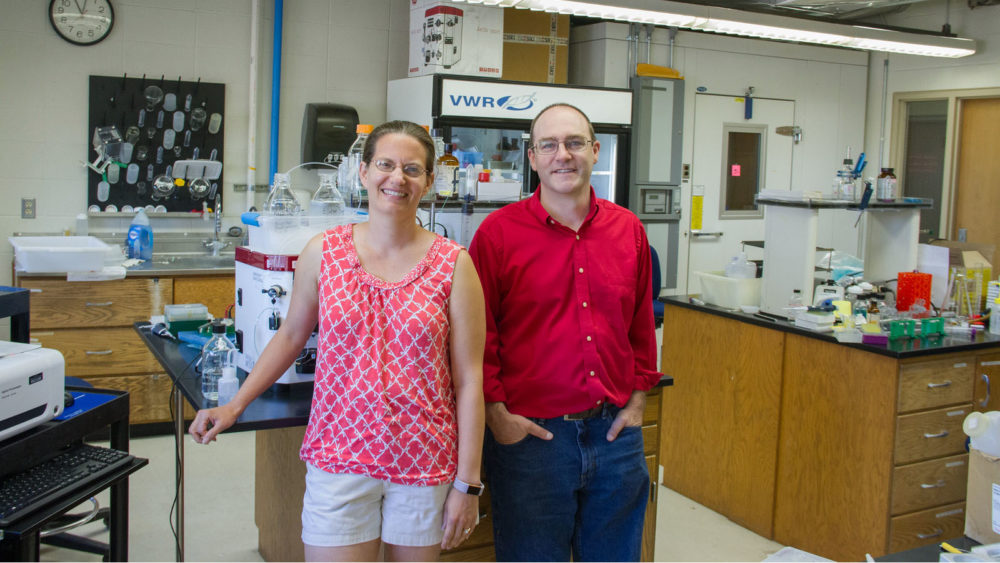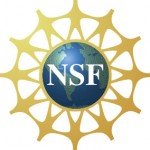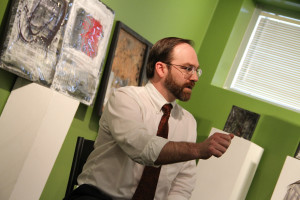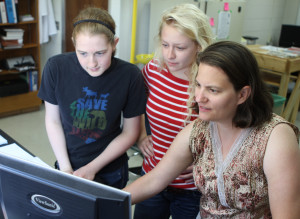
Amanda Nienow and Scott Bur
Gustavus Adolphus College chemistry professors Scott Bur and Amanda Nienow were recently named winners of grants from the National Science Foundation (NSF) to support their continued research. Both professors are being recognized with an NSF grant for the second time, and both plan to include Gustavus undergraduates in their ongoing research projects.
Bur, who has taught at Gustavus since 2003, was awarded a $236,068 grant to explore genetic mechanisms in parasites that can cause diseases. By the end of the three-year grant project, Bur hopes to have identified a chemical probe that can disrupt critical interactions in the cells, helping researchers understand what happens when specific parts of gene regulation are blocked. To do this, his team will focus on gene-regulating proteins that contain a region known as the bromodomain, which allows them to test the effects of tiny modifications to DNA that tell the cell where a gene is located and how to access the gene. The particular organism Bur’s team is focusing on is Plasmodium falciparum, a parasite that causes malaria.
The project explores the fundamental science of gene storage and expression, building a base of understanding that may eventually lead to the development of drug therapies that are targeted enough to kill the malaria-causing organism without harming the human. “Ultimately, we want to get to a point where we understand the DNA well enough that if something goes wrong at the cellular level, we can find a way to ‘shut off’ that gene transcription instead of trying to treat the issue after it causes problems,” Bur explained.
Students in Bur’s lab learn how to transform bacterial cells with recombinant DNA to produce specific proteins, design and synthesize drug-like molecules, and develop ways of testing these molecules against the protein. Other students might use x-ray crystallography to understand how molecules interact with proteins, study small fragments of proteins that are involved in DNA storage, or analyze different variants of the protein, such as the human version, to see how molecules can selectively inhibit the parasite’s protein but not the human’s.
“We know who the players are, but we don’t know how they work together,” Bur said, referring to gene-regulating proteins. “We want to understand exactly how some of the Plasmodium falciparum proteins interact to change gene-regulation, then we can find the best way to neutralize them.”
Bur highlighted the work of the Gustavus Office of Research and Sponsored Programs, which works with faculty members to identify grant possibilities, prepare proposals, and secure funding that supports increased research opportunities for professors and students alike.
“It’s great to partner with a team that knows the ins and outs of these grant systems,” he said. “They understand research and have done a tremendous job of connecting faculty members with funding that supports hands-on learning.”
Nienow, a member of the Gustavus faculty since 2007, won a $217,674 grant to continue her research on the environmental and agricultural impact of the herbicide dicamba. On the market for over 30 years, dicamba has been used more heavily since 2017 because of the introduction of genetically modified soybeans that can tolerate the herbicide. Her research centers on how dicambra undergoes changes through reactions with other compounds, sunlight, and water.
“The project is really to understand the chemistry of what’s happening to dicamba in the gas phase,” Nienow said. “What’s it changing into? What’s it reacting with? How does it behave differently?”
Like Bur, Nienow’s research focuses on questions of fundamental chemistry, which has implications down the line for agricultural usage, herbicide development, and product safety. The grant will allow her to build a dedicated and sustainable team of research students that work full-time throughout the summer and continue their research throughout the academic year. Nienow expects her students to attend national conferences and to travel to France to experience international chemistry work in one of her collaborator’s labs.
“We’ll use a lot of analytical chemistry techniques in this research project,” Nienow said, noting that students would mix solutions, utilize photochemistry, and use a mass spectrometer and other analytical instrumentation to analyze samples. “Research goes from planning the experiment to making the things you need to analyzing the results before writing and presenting the information.”
Capitalizing on the College’s location in agriculture-rich southern Minnesota, the professor also plans to work with a Gustavus student to develop “Chemistry Night” events for high school students, which would expand the department’s youth outreach by introducing instrumentation and chemistry-based problem solving to teenagers who are interested in scientific research.
“Working side-by-side with the students is really fun,” Nienow said. “I’m excited about the science and the opportunity to sustain opportunities for them for a multiyear project.”
 The National Science Foundation (NSF) is an independent federal agency created by Congress in 1950 “to promote the progress of science; to advance the national health, prosperity, and welfare; to secure the national defense…” NSF supports basic research and people to create knowledge that transforms the future. This type of support is a primary driver of the U.S. economy, enhances the nation’s security, and advances knowledge to sustain global leadership.
The National Science Foundation (NSF) is an independent federal agency created by Congress in 1950 “to promote the progress of science; to advance the national health, prosperity, and welfare; to secure the national defense…” NSF supports basic research and people to create knowledge that transforms the future. This type of support is a primary driver of the U.S. economy, enhances the nation’s security, and advances knowledge to sustain global leadership.
###
Media Contact: Director of Media Relations and Internal Communication Luc Hatlestad
luch@gustavus.edu
507-933-7510

